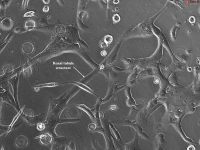Subcellular Renal Proximal Tubular Mitochondrial Toxicity with Tenofovir Treatment
互联网
互联网
相关产品推荐

3D Renal Tubule Formation Kit
$921

Recombinant-Xenopus-laevis-Proximal-tubules-expressed-gene-proteinptegProximal tubules-expressed gene protein; Xpteg Alternative name(s): MAP17-like protein PDZK1-interacting protein 1-like
¥9870

(R,1R)-Tenofovir amibufenamide;1571076-37-3;≥99%;V37539-1mg
¥660

应激与毒性通路发现者DNA甲基化PCR芯片 Stress & Toxicity PathwayFinder DNA Methylation PCR Array
¥4800

PIEZO1/PIEZO1蛋白Recombinant Human Piezo-type mechanosensitive ion channel component 1 (PIEZO1)重组蛋白(Membrane protein induced by beta-amyloid treatment)(Mib)(Protein FAM38A)蛋白
¥1836
相关问答

